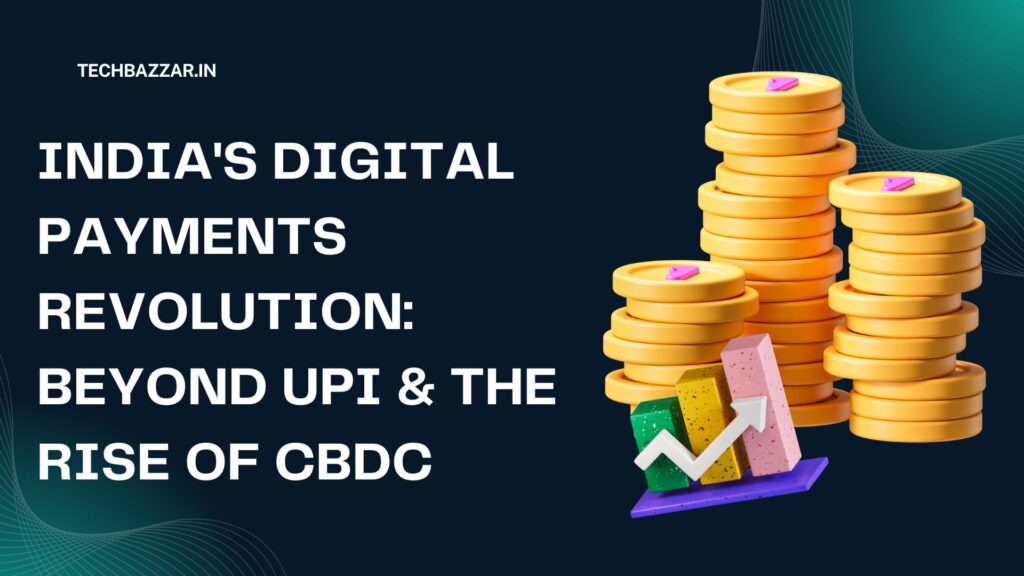From the bustling streets of Mumbai to the remotest villages, the Unified Payments Interface (UPI) has undeniably transformed how India transacts. Launched in 2016, UPI has become synonymous with instant, seamless digital payments, empowering millions with financial access. As of March 2025, UPI recorded an astounding 19.78 billion transactions worth ₹24.77 trillion in a single month, capping off a financial year (FY25) with 185.8 billion transactions, a 41.7% increase from the previous year. UPI’s meteoric rise is a testament to its simplicity and effectiveness, solidifying its position as the backbone of India’s Digital Payments Revolution.
But what happens when the backbone is so strong? India isn’t resting on its laurels. The journey of India’s Digital Payments Revolution is continuously accelerating, with new innovations set to redefine financial interactions for years to come.
The UPI Phenomenon: A Brief Recap
UPI’s success lies in its real-time, interoperable platform that allows instant peer-to-peer (P2P) and person-to-merchant (P2M) payments directly from a bank account using just a virtual payment address (VPA) or QR code. It democratized digital payments, brought millions into the formal financial system, and significantly reduced reliance on cash. Its ease of use and zero transaction fees for many common transactions made it an instant hit, setting a global benchmark for digital public infrastructure.
However, the story of India’s Digital Payments Revolution extends far beyond UPI’s current achievements.

Beyond UPI: Charting the Next Frontier of Digital Payments
The push for a truly digital and inclusive economy has given rise to several groundbreaking initiatives, each designed to build upon UPI’s success and unlock new avenues for financial innovation of India’s Digital Payments Revolution.
1. Open Network for Digital Commerce (ONDC): Decentralizing E-commerce
Imagine a world where small shopkeepers in Mumbai can list their products online and reach customers nationwide without being tied to a single e-commerce giant. This is the vision of the Open Network for Digital Commerce (ONDC). Launched as an initiative by the Department for Promotion of Industry and Internal Trade (DPIIT), ONDC aims to democratize e-commerce by creating an open, interoperable network.
- How it Works: Unlike traditional e-commerce platforms that operate as walled gardens, ONDC acts as a protocol layer. It connects buyers, sellers, logistics providers, and payment gateways through open specifications. Any buyer application (like Paytm or PhonePe) can discover any seller on the network, fostering choice and competition.
- Impact: ONDC promises to reduce costs for merchants (PwC reports a 30-40% reduction in transaction costs compared to traditional platforms), empower small and medium enterprises (MSMEs) by giving them wider reach, and expand consumer choices. As of January 2025, ONDC had registered over 7.64 lakh sellers and service providers across 616+ cities, demonstrating rapid growth and its potential to capture a significant share of India’s digital commerce market by 2025.
- Role in Payments: ONDC inherently supports various payment methods, including UPI, wallets, and card-based transactions, seamlessly integrating them into the commerce flow. It’s set to amplify the adoption of digital payments in new segments of India’s Digital Payments Revolution.
2. Central Bank Digital Currency (CBDC) – The Digital Rupee (e₹)
Perhaps one of the most significant advancements in India’s Digital Payments Revolution is the introduction of the Central Bank Digital Currency (CBDC), known as the Digital Rupee (e₹). Issued by the Reserve Bank of India (RBI), the e₹ is a digital form of sovereign currency, distinct from cryptocurrencies.
- Purpose: The Digital Rupee aims to offer a secure, regulated, and efficient digital alternative to physical cash. It comes in two forms:
- e₹-W (Wholesale): For interbank settlements, launched in November 2022. It aims to make inter-bank markets more efficient.
- e₹-R (Retail): For public use, launched in pilot mode in December 2022. It’s designed for person-to-person (P2P) and person-to-merchant (P2M) transactions.
- Key Features & Progress (as of June 2025):
- The RBI’s annual report released in May 2025 noted that CBDC in circulation significantly increased, reaching ₹10.15 billion (approximately $120 million).
- The retail CBDC pilot now covers 6 million users across 17 banks.
- New features include offline capability (allowing transactions without internet connectivity) and programmable payments (where the currency can be programmed for specific uses like welfare benefits or carbon credits, as seen in pilot projects).
- Major FinTech players and banks are partnering with RBI to act as entry points for users.
- Benefits: Potential for increased financial inclusion (especially with offline capabilities), reduced cost of currency management, faster cross-border remittances, and a safe alternative to private cryptocurrencies.
- Challenges: Widespread adoption requires significant user education and seamless integration with existing payment infrastructure. Privacy concerns and the potential impact on commercial banks are also under careful consideration. The RBI is taking a cautious, phased approach to ensure its safety and robustness of India’s Digital Payments Revolution.
3. Embedded Finance & Neo-banking: Seamless Financial Services
The line between financial services and everyday activities is blurring thanks to embedded finance. This trend sees financial products (like lending, insurance, or payments) seamlessly integrated into non-financial platforms, making transactions more contextual and convenient.
- How it’s Evolving: In India, ride-hailing apps offering in-app insurance, e-commerce platforms providing “Buy Now, Pay Later” (BNPL) options at checkout, and even AgriTech platforms offering embedded credit lines to farmers are prime examples.
- Neo-banking’s Role: Neo-banks, digital-first financial institutions without physical branches, are also gaining traction. They focus on providing personalized, user-friendly banking experiences, often leveraging AI for credit assessment and customer support.
- Impact: This enhances customer convenience, opens new revenue streams for non-financial companies, and significantly advances financial inclusion by reaching underserved populations through platforms they already use. Mumbai, a FinTech hub, is seeing numerous startups in this space and India’s Digital Payments Revolution.
4. Tokenization and Web3 Payments: The Decentralized Horizon
While still nascent, the impact of blockchain and tokenization on payments is a significant future trend. Tokenization of traditional assets (like real estate or commodities) into digital tokens is making fractional ownership and instant settlement possible.
- Influence on Payments: In the payment sphere, this translates to more secure card-on-file transactions (where card details are replaced by a unique “token”), reducing the risk of data breaches. Furthermore, the broader Web3 movement is exploring decentralized payment rails, stablecoins, and even crypto-to-fiat payment solutions, offering alternative ways to transfer value directly and transparently of India’s Digital Payments Revolution of India’s Digital Payments Revolution.
The Road Ahead for India’s Digital Payments Revolution
The journey of India’s Digital Payments Revolution is a dynamic one, constantly adapting to technological advancements and user needs. The expansion of UPI globally, the maturation of ONDC, and the cautious but steady rollout of the Digital Rupee all point towards an increasingly sophisticated and inclusive financial ecosystem.
Challenges remain, particularly concerning digital literacy, cybersecurity threats (which are evolving with AI), and ensuring equitable access across diverse demographics. However, the proactive stance of regulators, the vibrant FinTech startup scene, and the sheer scale of digital adoption by the Indian populace suggest a bright future.
The next few years will cement India’s position not just as a leader in digital payments adoption but also as a trailblazer in creating innovative, public digital infrastructure that empowers its citizens. India’s Digital Payments Revolution is far from over – it’s just getting more exciting.
Also Read : Top 5 Blockchain Layer 1 Chains: Features, Market Cap & More
Looking to grow your brand online? Our expert digital marketing services help you boost visibility, generate quality leads, and drive real results. From SEO and social media to performance marketing, we’ve got you covered check out our services at KnightPixels and let’s elevate your digital presence! Digital Detox Guide Digital Detox Guide Digital Detox Guide Digital Detox Guide Digital Detox Guide








